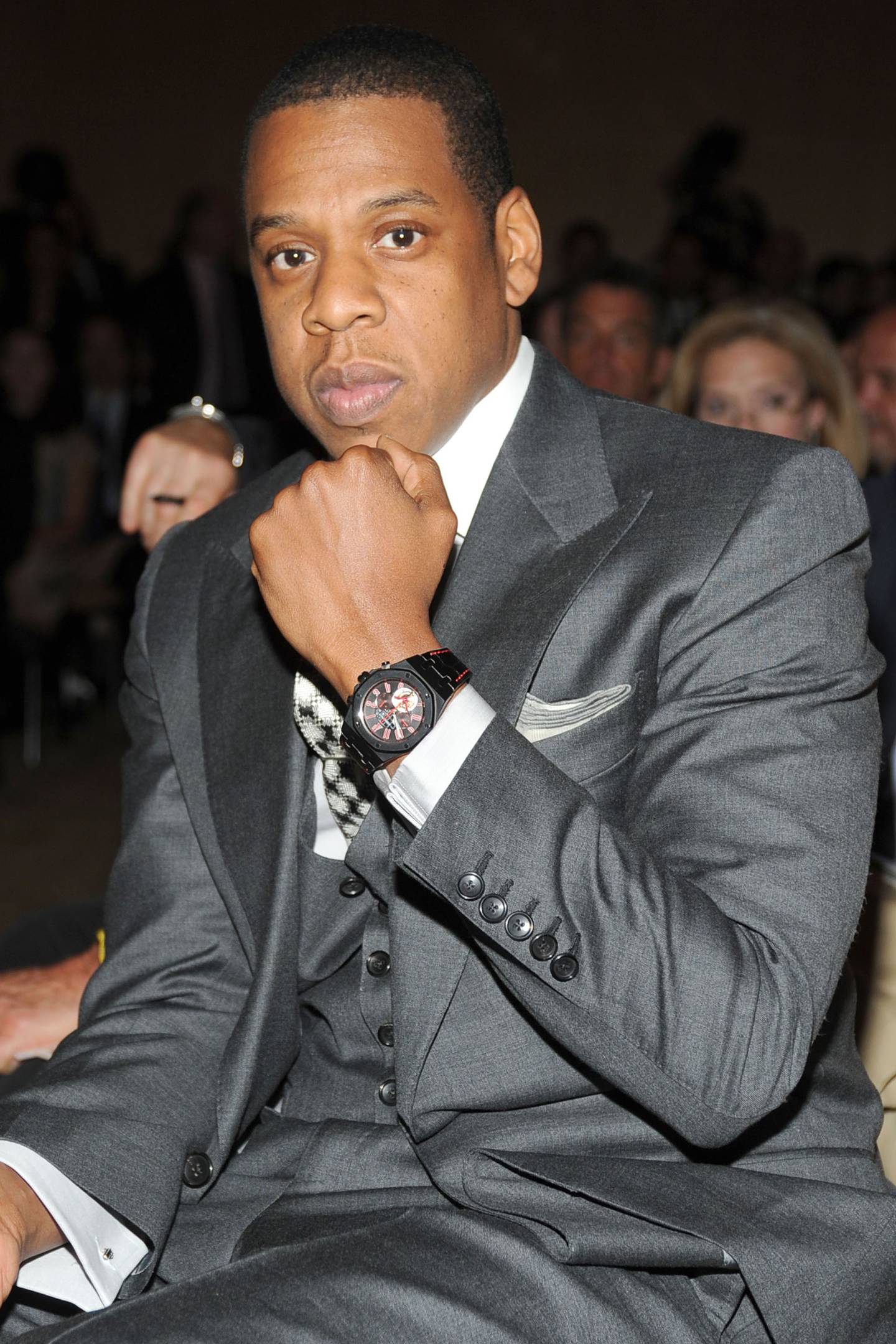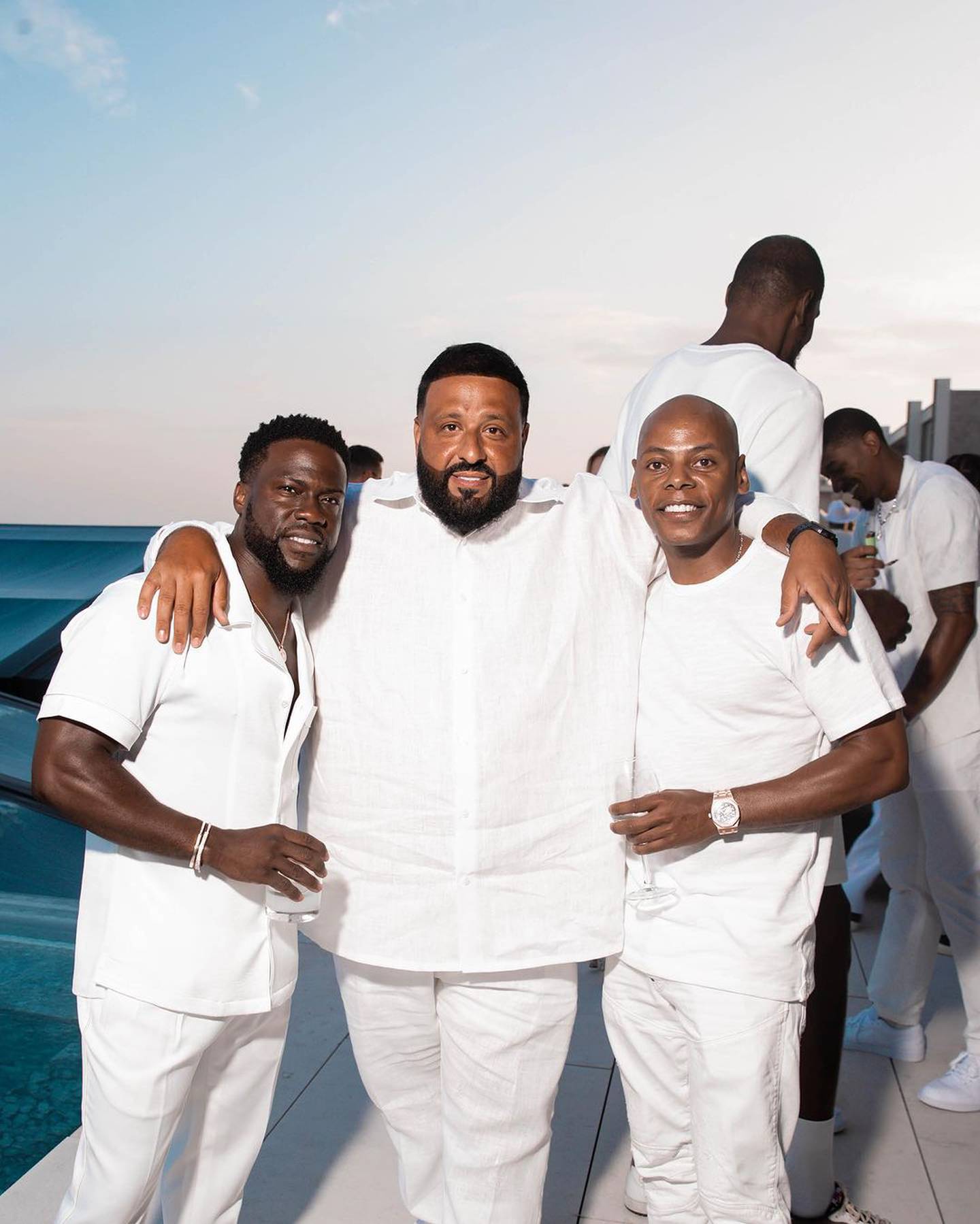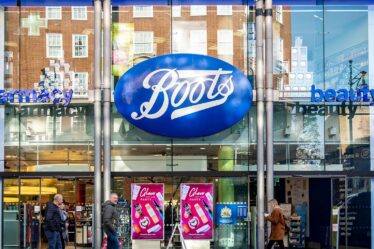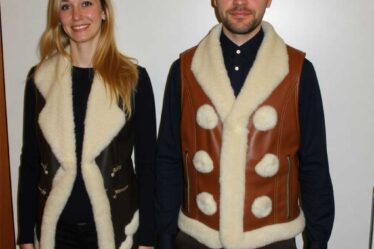
In 2004, François-Henry Bennahmias — then managing director of Audemars Piguet North America — sent his Swiss employers some pictures from the New York social scene. Stars of hip-hop and rap were captured rubbing shoulders with the old-world power players (mostly wealthy white men) who had long been the target audience for top-end timepieces. In one, a pin-stripe-suited P. Diddy drank champagne with cosmetics titan William Lauder at the launch of an Estée Lauder-backed fragrance bearing his name.
At the time, Audemars Piguet was a well-thought-of but middling Swiss watch company. The pictures, Bennahmias thought, showed how rapidly hip-hop and rap were gaining recognition in the cultural mainstream and among established elites — representing a transformative opportunity to elevate the company’s standing. His plan? First, a collaboration with Jay-Z, a recording artist whose burgeoning crossover success he saw as being at the vanguard of what culture was about to become.
In the conservative, insular world of Swiss watchmaking, there was no road map for such a deal. But Bennahmias managed to convince his bosses, and in 2005, Audemars Piguet introduced the Royal Oak Offshore Jay-Z 10th Anniversary Limited Edition — 100 top-end watches co-designed with the artist. The watch’s case back was engraved with Jay-Z’s signature, and included in the box was an iPod pre-loaded with his albums. The watch sold out in six weeks — considered a lightning success in an era pre-dating social media.
“The association of luxury and street culture was groundbreaking,” said Bennahmias, who went on to become the brand’s chief executive in 2012. “We were the first company from the luxury [watch] world to cross the bridge and embrace street culture.”
“This was absolutely a line in the sand moment,” echoed Benjamin Clymer, who founded the influential watch platform and retailer Hodinkee in 2008. “To do a collaboration with a rapper — a person of colour — and put his name on the back of the watch, that was just astounding.”
Twenty years on, interest in Swiss luxury watches is driven by an increasingly close relationship with culture writ large — with associations with musicians, football stars, comic book franchises and video games all driving visibility for the once stuffy, elitist world.
As younger, more global and more opinionated audiences build watch communities of their own, brands have to decide how to go about meeting consumers where their interests lie. Some take a direct route through collaborations, while others use VIP relations to steer the narrative. And why? Clymer sums it up: “Now, people care a lot more about who’s wearing what and why than about the watches themselves,” he says.
“Popular culture became a kind of media channel,” says George Ciz, chief marketing officer at TAG Heuer, which works with a roster of stars, from actor Ryan Gosling to tennis champion Naomi Osaka. “It gives you the association with someone or something people love,” he says.
Unofficial Links
The strongest associations are often unofficial. At Fanatics CEO Michael Rubin’s July 4th White Party this year, French football star Kylian Mbappé was photographed in Hublot — the LVMH-owned brand for which he has been a paid ambassador since 2018. But actor Kevin Hart (178 million Instagram followers) and musician DJ Khaled (36 million), neither of whom are official spokespeople, wore Audemars Piguet to the event, creating a major social media moment.
Liaisons between star and brand gain further legitimacy — and traction online — when the stars wear top-end, low-volume pieces that are unlikely to have been gifted. Those partnerships with high-profile collectors contrast with the pay-for-play, step-and-repeat strategies of high-end jewellers — who pay top dollar to position their brands in glamorous red carpet settings, but which rarely foster the sense of an authentic consumer tribe. “We see people wearing our watches who could give the feeling they were ambassadors and that we were in collaboration with them when we’re absolutely not,” says Bennahmias. “We don’t give watches away.”

Instead (and often on the quiet), many brands lean into VIP client relationships, granting access to highly collectable, hard-to-track-down pieces such as the black ceramic Audemars Piguet Royal Oak worn by DJ Khaled at Rubin’s party. “Allocation is the new discount,” Clymer said.
Despite the seismic shift in the industry, other Swiss companies have yet to adapt their strategies to foster pop-culture clout, however.
Patek Philippe — the Swiss watch brand recognisable for its 25-year-old black-and-white ad campaigns and enduring slogan — has no collaborations and claims not to show favouritism towards high-profile customers, yet is hotly collected and runs lengthy wait lists on many styles. The industry legend of Michelle Obama contacting the company’s New York office about a watch and being invited to contact her local authorised Patek dealer has the ring of truth about it, Clymer says.
Not that Patek isn’t visible in the culture: At Rubin’s party, Jay-Z wore a vintage piece from the brand believed to be worth $8 million, while Tom Brady sported a white-dialled Nautilus. The media value is huge, and yet Patek didn’t spend a nickel. (The brand’s approach might be compared to Birkin-maker Hermès, whose avid collectors, including Drake and Victoria Beckham, have boosted the brand in pop culture for years despite not being paid ambassadors.)
Reaching New Audiences
Other brands that once had more conservative approaches have changed tack, opening up to collaborations in recent years. LVMH-owned Zenith, which makes around 25,000 pieces a year, historically catered to watch insiders by pushing the story of mechanical innovations such as its El Primero movement. But under Julien Tornare, who was appointed its CEO in 2017, the brand has followed in Audemars’ footsteps, collaborating with American rapper Swiss Beatz, British DJ and producer Carl Cox, Chinese actor Xiao Zhan and the Argentine-Spanish contemporary artist Felipe Pantone in a bid to blow away the cobwebs.
“If you only work with your existing clients, you age with your clients,” Tornare said. “By getting into wider popular culture, we show them that watch culture is part of today’s world.”
Richemont’s Vacheron Constantin — one of Switzerland’s oldest and most traditional watchmakers — has sought to expand its communications territory, too, through partnerships with the Louvre in Paris and London’s iconic Abbey Road recording studios. The brand aced Wimbledon this year when Brad Pitt was spotted in the crowd wearing the brand’s 222, which sources say he bought privately.
The 33-year-old New Yorker Brynn Wallner got into watches in 2020 when she launched Dimepiece, a watch platform aimed at women. In her view, the industry has yet to fully acknowledge the role popular culture — and particularly black culture — has played in its success. “I have learned a lot about watches through rap,” she said. “Watches are more popular than before, but brands don’t want to admit why.”
Beyond music, the Swiss watch industry’s approach to sports has evolved, too. In previous generations, Rolex and TAG Heuer had set the tone by aligning with sports typically the preserve of upper and middle-class white men: F1, golf, tennis and sailing. Football was once disregarded by luxury brands, but Hublot now sponsors the world’s biggest football tournaments, including the FIFA World Cup, and counts a number of top footballers as ambassadors like Mbappé and Alex Morgan, the American two-time FIFA Women’s World Cup winner.

“Football was never seen as a luxury sport because it’s not elitist,” Hublot CEO Ricardo Guadalupe said. “Some people even told us we were crazy to enter it. But football has always had a communal aspect that brings nations and people together. The whole world watches football, and this was an incredible exposure for Hublot.”
Hublot has since gone into basketball, too, working with Miami Heat and LA Lakers. Guadalupe points out that there’s a design story linking the threads of pop culture, sport and an evolving watch market: The success of bold styles such as Hublot’s oversized, angular Big Bang have led brands to adapt their product offer — not just their communications — to appeal to a younger generation cultural influencers and their audiences.
“We see a desire to be unique and different, to go against the status quo,” Guadalupe says. “There’s a big trend for watches that are unique and stylish, and not so classic.” The same could be said of Audemars Piguet’s Royal Oak and Patek’s Nautilus, two of the most in-demand luxury watches today when 20 years ago they barely registered.
Striking A Balance
Reaching out to consumers wherever their interests lie — versus limiting brand communications to predefined “elite” spheres — might sound obvious in today’s multi-polar world. In luxury apparel, too, big brands have ramped up so-called “cultural” strategies aimed at broadening their reach beyond fashion-week runway fans — sponsoring pop stars’ tours, football teams and even underwriting films.
Still, these efforts require deft execution: “One of the key currencies of luxury is authenticity, and it’s very easy to make a mistake and go for cheap clicks,” says TAG Heuer’s Ciz. “You can use popular culture to stretch the audience and go further than you could go by yourself, but it still has to make sense.”
TAG Heuer walked that line when it partnered on a version of its Connected watch with the Super Mario gaming franchise two years ago. Eyebrows were raised, but the brand’s marketing chief Ciz says it was right in the slot. “This stuff should not be run-of-the-mill, not day-to-day hygiene marketing. It needs to grab people, ” he said. TAG Heuer claims the watch had 90,000 registrations for 2,000 pieces, and sold out in 13 minutes.
While brands say they’re shaping the narrative, some observers aren’t so sure. Sonya Yu, a California-based collector, said she feels it’s ultimately the watch community — powered by a younger and more diverse membership — that dictates success. “The industry is being dragged into the modern era,” she says. “If they are smart enough, they will let it happen and embrace it.”
Isobel Farmiloe, brand strategy director at Dazed Studio, agrees. “Young people are shifting their behaviours and beliefs in order to take back control for themselves and are moving away from traditional power structures, influencers and celebrities,” she said. “They’re trusting themselves and each other more than anyone else.”
But smart brands can work to avoid potential pitfalls, according to Zenith’s Tornare. “It’s not only about the red carpet effect. People are not stupid; they know there is a deal, and if they know there’s a deal, it has to look authentic and true,” he said.
At Audemars Piguet, the embrace of popular culture has certainly worked. Since its Jay-Z partnership in 2005, the brand has gone on to collaborate with a litany of figures and franchises from music, sports and pop culture, including basketball star LeBron James and Marvel. Annual revenues have grown from around 300 million Swiss francs in the early 2000s to over 2 billion Swiss francs ($2.2 billion) last year, making it Switzerland’s second-largest independent watch brand, according to Morgan Stanley estimates.
“Can anything survive without collaboration or promotion?” CEO Bennahmias asked. “No. We are far from being done in terms of what these two worlds, street culture and luxury, can do together.”



